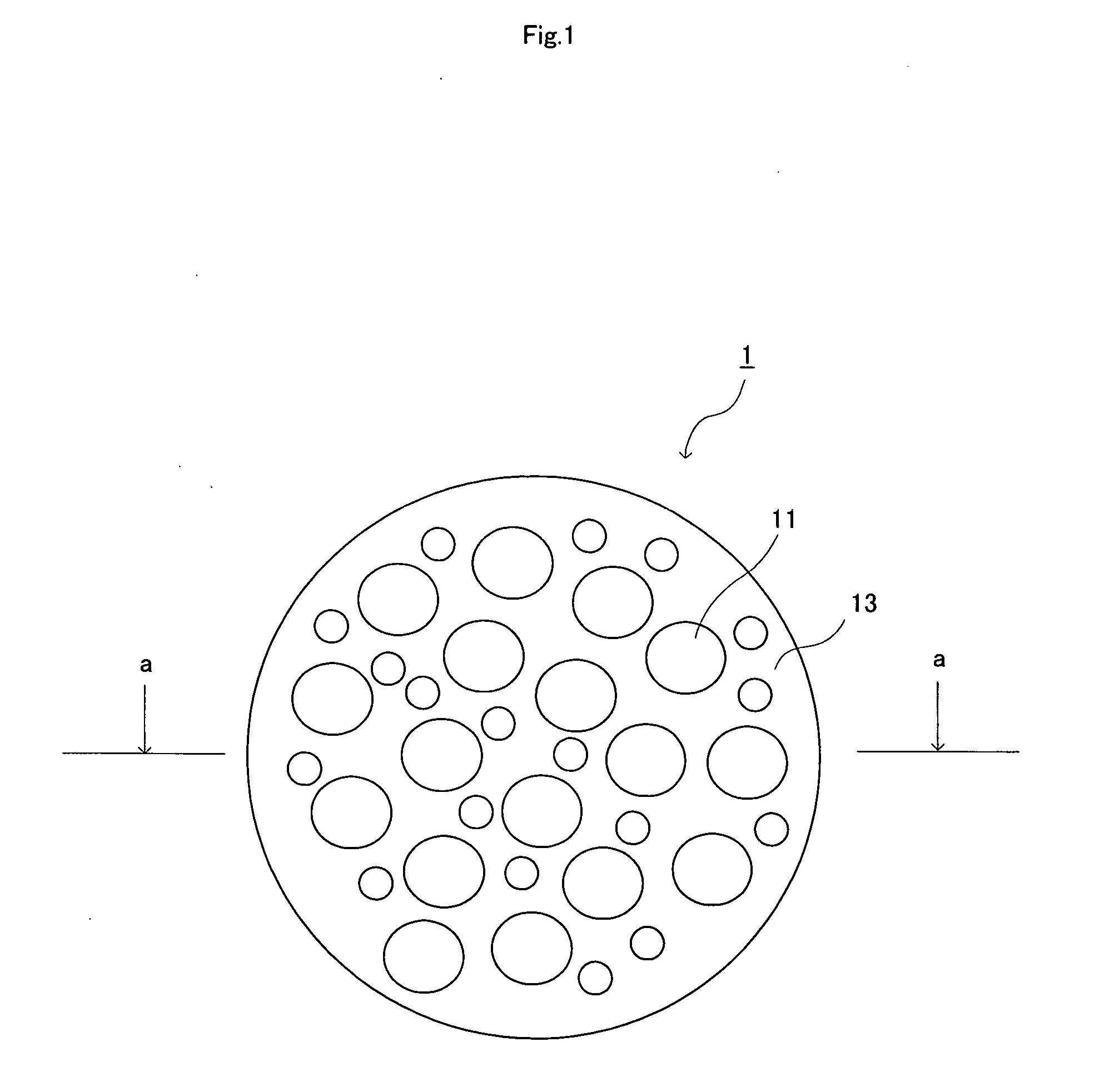Hydrogen-permeable membrane and process for production thereof
a technology of hydrogen-permeable membrane and process, which is applied in the direction of membranes, separation processes, filtration separation, etc., can solve the problems of high cost, inferiority of pd in hydrogen permeability, and in general inferiority of pd in durability, so as to achieve high hydrogen permeability, low deterioration, and superior durability
- Summary
- Abstract
- Description
- Claims
- Application Information
AI Technical Summary
Benefits of technology
Problems solved by technology
Method used
Image
Examples
example 1
[0046] A hydrogen-permeable membrane was formed on a porous ceramic substrate using a high-frequency magnetron sputtering apparatus. In FIG. 3 is shown the produced hydrogen-permeable membrane unit.
[0047] First, in a high-frequency magnetron sputtering apparatus were placed a porous ceramic substrate fitted inside a stainless steel holder, an Al target, and a Pd chip (a target) placed on the Al target. Then, the pressure inside the apparatus was reduced to about 4×10−5 Pa. As the porous ceramic substrate, there was used one which was fitted to a stainless steel holder, and the gap between the substrate and the holder was filled with a sealing material (a brazing material). Then, argon gas and nitrogen gas (volume ratio: 85 / 15) were introduced into the apparatus until a pressure of 9.3 Pa was reached, and sputtering was conducted at room temperature. As a result, a hydrogen-permeable membrane having a thickness of 10 nm was formed on one side of the porous ceramic substrate. In the ...
example 2
[0050] Using the hydrogen-permeable membrane unit obtained in Example 1, the same hydrogen permeability test as in Example 1 was repeated 10 times. Then, the hydrogen-permeable membrane unit was taken out from the hydrogen permeability tester to observe the surface of the hydrogen-permeable membrane. As a result, no deterioration such as crack was seen on the surface of the hydrogen-permeable membrane.
PUM
| Property | Measurement | Unit |
|---|---|---|
| thickness | aaaaa | aaaaa |
| diameter | aaaaa | aaaaa |
| thickness | aaaaa | aaaaa |
Abstract
Description
Claims
Application Information
 Login to View More
Login to View More - R&D
- Intellectual Property
- Life Sciences
- Materials
- Tech Scout
- Unparalleled Data Quality
- Higher Quality Content
- 60% Fewer Hallucinations
Browse by: Latest US Patents, China's latest patents, Technical Efficacy Thesaurus, Application Domain, Technology Topic, Popular Technical Reports.
© 2025 PatSnap. All rights reserved.Legal|Privacy policy|Modern Slavery Act Transparency Statement|Sitemap|About US| Contact US: help@patsnap.com



